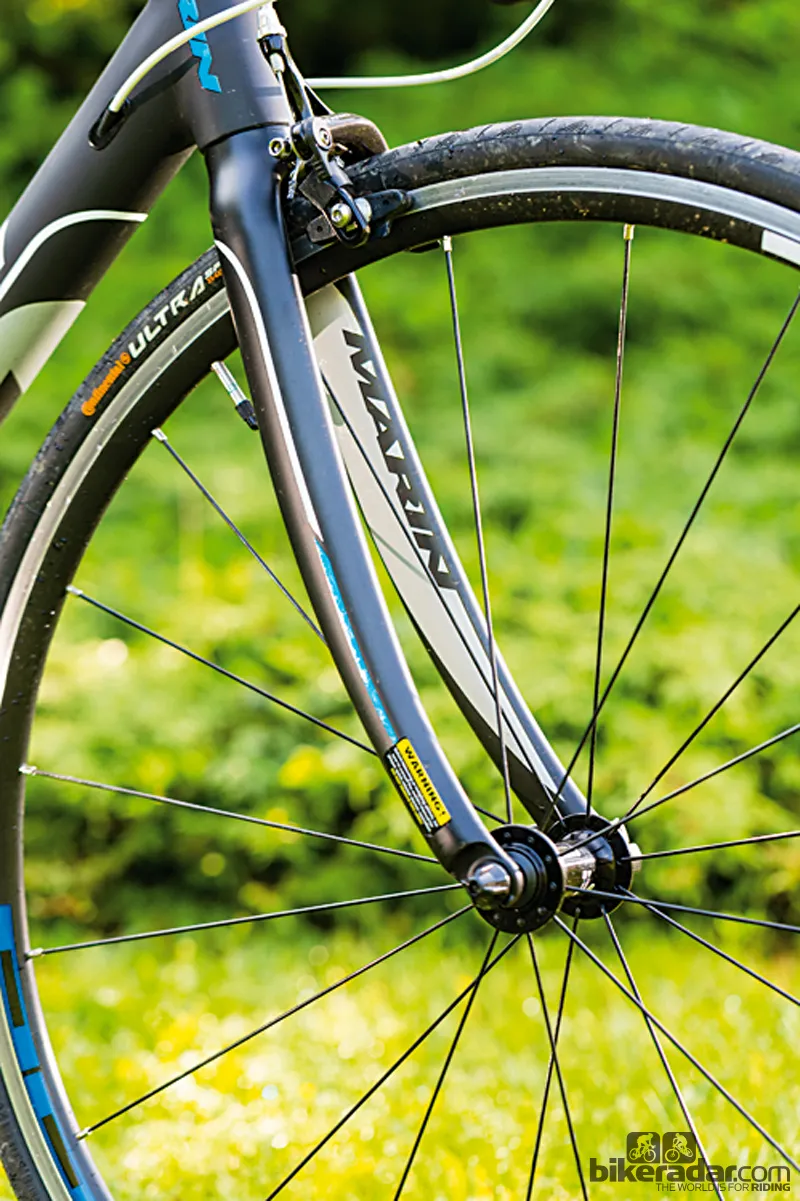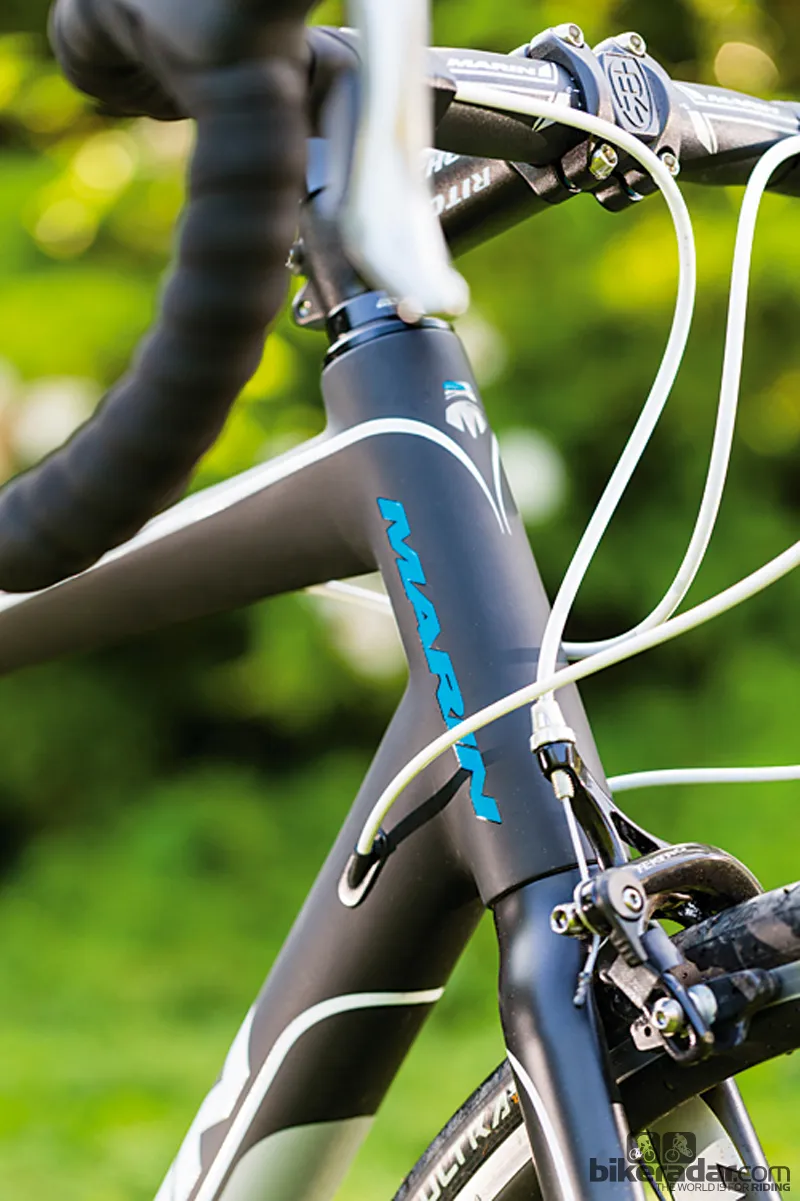Marin are best known for their mountain bikes, but the Californian company have a small range of drop bar bikes too. The Verona T3 is new for 2013 and marks the brand’s first foray into carbon fibre road bikes.
In the US there’s a range of Veronas but in the UK we get just one. It sits at the top of Marin’s road bike range but is very much entry level for carbon-framed bikes.
Ride & handling: Comfort over stiffness
The Verona is pitched squarely at the sportive/endurance market, promising comfort and low weight (a good combination for racing, too), and looks like a strong contender.
Out on the road the Verona lives up to its endurance billing. Marin have, entirely reasonably, focused on low frame weight and comfort ahead of ultimate stiffness, making the Verona more about the long haul than the sprint. It’s an extremely smooth-riding bike, dispatching broken or rippled Tarmac with aplomb.
The long (but not overly long) head tube and shallow drop bar make for a sporty but not aggressive riding position, and it’s a similar story with the frame geometry. The angles are more relaxed than those on a full-on race frame, giving the Marin a touch of extra stability that’s very welcome under a tiring rider.

Marin Verona T3
With less frame volume than some other similarly pitched bikes, you can coax a bit more flex from the Verona if you start properly hauling (or if you’re particularly large or powerful), but that kind of thing isn’t really what the Marin’s designed for.
That said, the best bikes at this price do manage to deliver a little more front end stiffness without taking too much of a comfort or weight hit.
Frame & equipment: Understated looks, light chassis and reliable group
Marin certainly have the weight side of things sorted, at least as far as the frame goes. The 900g claimed weight is light by any standards, and pretty spectacular at what’s not far off entry-level pricing for carbon, where frame weights north of 1,200g aren’t unusual. Given budgetary constraints, there’s only so much that designers can do with grades of carbon and sophisticated layups, so to get to that low weight Marin have opted to use a bit less material.
By sticking with a conventional 1.125in head tube instead of a tapered front end and using a normal threaded bottom bracket shell instead of, say, a BB30, Marin don’t need to put as much carbon into the frame.
The tubes aren’t by any means skinny but the Verona’s chassis isn’t as overtly voluminous as those of a lot of modern bikes. The exception is the seatstays, which look quite chunky, although in part that’s an optical illusion caused by the rest of the frame being a little less fat than we’re used to seeing.
In keeping with current trends, the cables are routed internally through the front triangle. If you wanted to upgrade to an electronic transmission in future, the routing means you could make a neat job of it.
It could be argued that the straight head tube and conventional BB limit upgrade options for forks and cranks, but there are still plenty of high-end options available in the 'old' standards. The fork would be quite low on the list of upgrades anyway – it’s full carbon and does a perfectly good job.

The ‘old school’ theme continues with the curved blades of the full-carbon fork
The Verona’s components are pretty much what you’d expect for the money, with a transmission based on Shimano’s Tiagra groupset. It might not be exciting but it’s good stuff, delivering reliable, smooth shifts.
The built-in gear indicators won’t be to all tastes, though, and the exposed gear cables don’t give as clean a look as rival setups with concealed cables. Marin have specced a 12-28T cassette to go with the 50/34T rings on the outboard-bearing FSA Gossamer chainset, giving a usefully low bottom gear without too many big jumps between cogs.
Wheels are Shimano’s entry level R501s, which are reasonably robust and not offensively heavy. Marin have fitted them with the same 25mm Continental Ultra Sport tyres found on the Norco; the slightly wider casing gives a useful extra dose of comfort without too much of a speed hit. Tektro brakes are unexciting but competent, although no more than that.
This article was originally published in Triathlon Plus magazine, available on Zinio.


